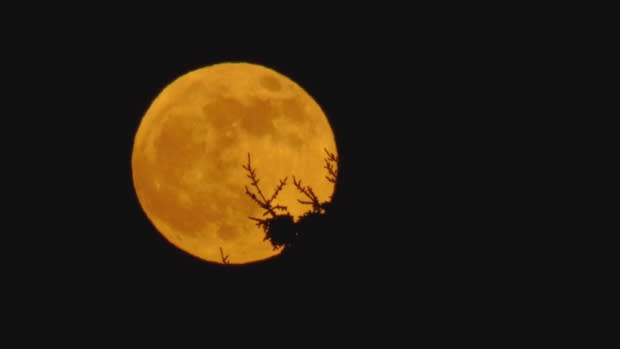Edmonton invited to view eclipse at Telus World of Science
An eerie red glow will dominate Edmonton's sky Sunday night as the moon undergoes a total lunar eclipse.
People were invited to watch the phenomenon at the Telus World of Science on 112th Avenue and 142th Street.
Frank Florian, director of the planetarium at the Telus World of Science in Edmonton, said the full moon should be at its optimum red or copper hue between 9:41 p..m. and 10:43 p.m.
Telescopes are set up along the walkway at the science centre to magnify the view of the moon.
"You'll be able to see craters and valleys and mountain ridges on the moon, dip into the earth's shadow, which is kind of a cool thing to do."
He said those who can't make it to the science centre can just look up.
"You don't need to use optical aids like binoculars or telescopes to view a lunar eclipse," he said. "Just go outside, look up with your eyes alone."
A lunar eclipse occurs when the moon moves through the earth's shadow, blocking the sun from shining on the moon

The eclipse starts at about 8:30 p.m. and turns into a partial eclipse from 10:43 p.m. until 11:50 p.m. when the moon is moving out of the shadow.
He describes it as sunlight passing through the earth's atmosphere around the edge of the earth, bending, "just like light bending through a prism."
"If you were on the moon's surface looking back at the earth, you'd actually see a ring of red around the earth.
Total lunar eclipses happen every two to five years.

The last one visible in Canada was in January 2018, in the early morning.
The next total lunar eclipse is set for May 26, 2021, Florian said, but will be early as well and not as visible as the moon in the night sky. The next best total eclipse will be May 15, 2022, in the early evening, he said.

